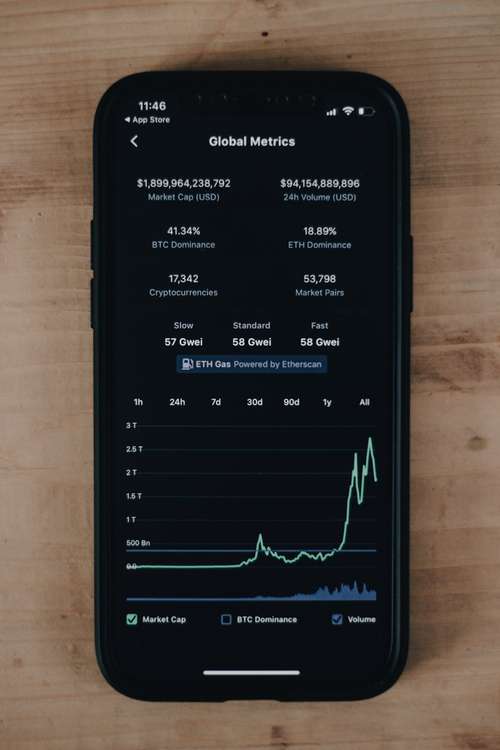Investing isn’t just about finding the next big opportunity; it’s about knowing yourself too.
Everyone has a different comfort level when it comes to taking risks. Some people are okay with the ups and downs, while others prefer a steady, predictable path. That’s what we call risk tolerance.
It’s all about understanding how much uncertainty you can handle before you start feeling uneasy. In this article, we’ll take a closer look at what risk tolerance really means and how it plays a crucial role in choosing the right investments for you.
What is Risk Tolerance?
Risk tolerance is all about how much uncertainty you’re comfortable with when investing. It’s your ability to handle the ups and downs in the value of your investments without losing sleep.
This concept is key in deciding where to put your money, as it often shapes the type and amount of investments you choose.
If you have a high risk tolerance, you might lean towards stocks, equity funds, or ETFs, as these tend to offer higher returns but with more volatility.
On the other hand, if you prefer stability and want to avoid big swings, you might choose bonds, bond funds, or income funds, which are typically safer options.
Understanding your risk tolerance helps you pick investments that match your comfort level and long-term goals.
Why Does It Matter in Investing?
Risk tolerance is a crucial factor when it comes to investing because it directly influences your investment choices and your long-term strategy. Knowing how much risk you’re willing to take helps you build a portfolio that aligns with your financial goals and comfort level.
If you choose investments that exceed your risk tolerance, you might panic during market downturns, leading to poor decisions like selling off assets at a loss. On the flip side, being too cautious could mean missing out on growth opportunities that fit your long-term objectives.
However, when you have a good understanding of your risk tolerance, you can create a balanced approach, ensuring your investments match your personal comfort and financial ambitions.
Types of Risk Tolerance
Understanding the different types of risk tolerance can help you make better investment decisions and shape your financial planning strategy. Here are the main categories:
#1: Aggressive Risk Tolerance
Aggressive investors are comfortable taking high risks for the chance of higher returns. They’re usually well-versed in the market and understand the volatility that comes with securities.
Their focus is on capital appreciation rather than preserving their initial investment. Typically, these investors allocate most of their portfolio to stocks, with little to no emphasis on bonds or cash, seeking growth over stability.
#2: Moderate Risk Tolerance
Moderate investors aim to grow their money but still want to manage risks carefully. They strike a balance between opportunities and potential losses, often following a “balanced” approach.
This usually means a mix of stocks and bonds, such as a 50/50 or 60/40 split, to provide growth while also protecting against significant downturns. This balanced method allows them to build a portfolio that aligns with both their short-term and long-term goals.
#3: Conservative Risk Tolerance
Conservative investors prioritize stability and capital preservation. They tend to avoid volatility and seek safe, low-risk investment options.
This type of risk tolerance is common among retirees or those nearing retirement who need to protect their principal investment.
Conservative investors often choose guaranteed and highly liquid assets like bank CDs, money markets, or government bonds, ensuring their investments remain stable and accessible.
How to Determine Your Risk Tolerance Level
Knowing your risk tolerance level is instrumental in making the right investment decisions and shaping your financial planning strategy.
Here’s how you can determine it:
Assess Your Financial Goals
Think about what you want to achieve with your investments. Are you saving for a short-term goal, like buying a house, or are you focused on long-term growth, like retirement? Your goals will influence how much risk you’re willing to take.
Evaluate Your Time Horizon
The length of time you plan to hold an investment can impact your risk tolerance. If you have a longer time horizon, you may be more comfortable taking on higher risk since you have time to recover from market fluctuations. A shorter time frame may mean opting for safer investments.
Review Your Financial Situation
Take a look at your current finances. Do you have enough emergency savings set aside? Are you free of high-interest debt? Having a stable financial base can allow you to take on more risk, while financial constraints may require a more conservative approach.
Reflect on Past Experiences
Consider how you’ve reacted to market volatility in the past. Did you feel anxious during market dips, or were you unphased? Your emotional response to risk is a strong indicator of your risk tolerance level. That’s an important risk assessment test you shouldn’t ignore.
Use Risk Assessment Tools
Many financial advisors and online platforms offer risk tolerance questionnaires. These tools ask questions about your investment goals, time horizon, and attitude towards risk to give you a clearer picture of your risk tolerance level.
Making the Smart Calls With Your Investments
Understanding your risk tolerance is crucial for making smart investment decisions and achieving your financial goals. It helps you build a portfolio that matches your comfort level and time horizon, reducing the chances of panic during market fluctuations.
When you take the time to assess your risk tolerance, you can create an investment strategy that feels right for you and keeps you on track.
Remember, investing is a journey, and knowing your limits is the first step to success. So, take charge, assess your risk, and invest with confidence.




